Zond = probe
http://mentallandscape.com/C_Zond08_64.jpg
http://mentallandscape.com/C_Zond08_60.jpg
http://mentallandscape.com/C_Zond08_67.jpg
http://mentallandscape.com/C_Zond08_59detail.jpg
Soviet engineers pioneered the use of cameras on spacecraft,
obtaining the first images of the far side of the Moon and the first
images from the surface of the Moon and Venus. Soviet planetary
spacecraft used cycloramic and swept linear photometers rather than
vidicon television cameras. On later American missions, the Viking
lander's panoramic camera and the Mars Odyssey linear pushbroom
camera hark back to Soviet camera designs.
Zond-5 through Zond-8 returned film images of the Moon and Earth
from 1968 to 1970. The camera system was developed at the Moscow
State University of Geodesy and Cartography (MIIGAiK) under Boris N.
Rodionov. Zond-6 and 8 carried a 400 mm camera using 13 × 18 cm
frames of panchromatic film. Zond-7 carried a 300 mm camera shooting
on 5.6 × 5.6 cm film (both color and panchromatic). The original
Zond-8 negatives have been digitized in Moscow to about 8000 × 6000
pixels, and are still among the best close images of that planet.
The second series of test spacecraft being a precursor to manned
circumlunar loop flights used a stripped-down variant of Soyuz
spacecraft, consisting of the service
and descent
modules, but lacking the orbital
module.
They were launched on the Proton rocket
which was just powerful enough to send the Zond on a free
return trajectory around the Moon without going into lunar
orbit (the type path that Apollo 13 flew
in its emergency abort). With minor modification, Zond was capable
of carrying two cosmonauts.
http://mentallandscape.com/V_Cameras.htm
===
http://mentallandscape.com/C_CatalogMoon.htm
Zond-8
Zond-8 flew by the Moon on October 24, 1970 and returned to Earth
with high quality photographs, some from as close as 1350 km. Images
were shot with the 400 mm AFA-BAM camera, on 13 × 18 cm frames of
isopanchromatic film. A session of 20 full-Moon pictures was
followed by a session of 78 Lunar-surface pictures (including 17
shots of the Earth over the Lunar horizon).
The images below are 20 percent of full size. Frames flagged with
a star are from 6000 × 8000 pixel images digitized in Moscow from
the original negatives. The remainder are from lower resolution
scans of film copies in the archives of the US Geological Survey.
The announced objectives of Zond 8 were investigations of the
Moon and circumlunar space and testing of onboard systems and
units. The spacecraft obtained photographs of Earth on 21 October
from a distance of 64,480 km. The spacecraft transmitted
flight images of Earth for three days. Zond 8 flew past the Moon
on October 24, 1970, at a distance of 1110.4 km and obtained
both black-and-white
and color photographs of the lunar surface. Scientific
measurements were also obtained during the flight.
Zond 8 reentered the Earth's atmosphere and splashed down
730 km SE of the Chagos
Archipelago, in the Indian Ocean on 27 October 1970,
24 km from the USSR recovery ship Taman.[1][2]
Zond-8
Zond-8 flew by the Moon on October 24, 1970 and returned to Earth
with high quality photographs, some from as close as 1350 km. Images
were shot with the 400 mm AFA-BAM camera, on 13 × 18 cm frames of
isopanchromatic film. A session of 20 full-Moon pictures was
followed by a session of 78 Lunar-surface pictures (including 17
shots of the Earth over the Lunar horizon).
The images below are 20 percent of full size. Frames flagged with
a star are from 6000 × 8000 pixel images digitized in Moscow from
the original negatives. The remainder are from lower resolution
scans of film copies in the archives of the US Geological Survey.
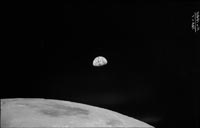 Frame 1 * Frame 1 * |
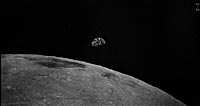 Frame 5 Frame 5 |
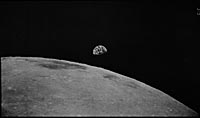 Frame 6 Frame 6 |
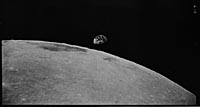 Frame 7 Frame 7 |
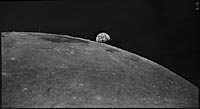 Frame 8 Frame 8 |
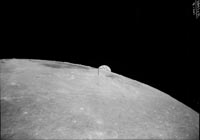 Frame 9 * Frame 9 * |
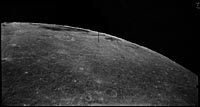 Frame 10 Frame 10 |
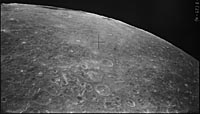 Frame 14 Frame 14 |
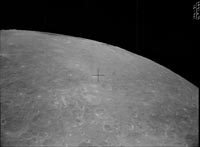 Frame 15 * Frame 15 * |
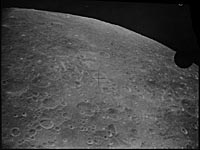 Frame 19 Frame 19 |
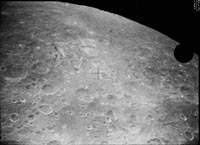 Frame 20 * Frame 20 * |
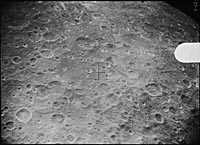 Frame 25 Frame 25 |
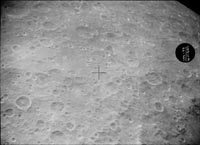 Frame 26 * Frame 26 * |
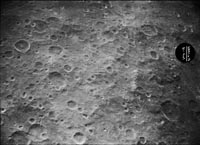 Frame 31 * Frame 31 * |
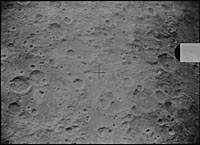 Frame 35 Frame 35 |
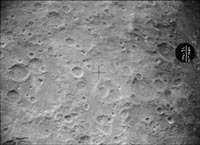 Frame 36 * Frame 36 * |
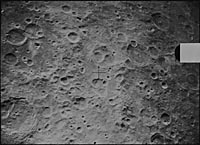 Frame 39 Frame 39 |
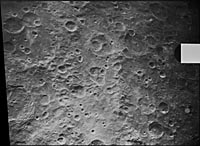 Frame 40 Frame 40 |
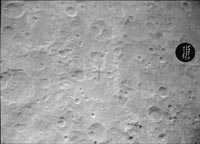 Frame 41 * Frame 41 * |
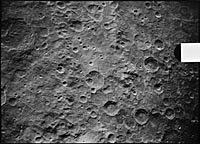 Frame 45 Frame 45 |
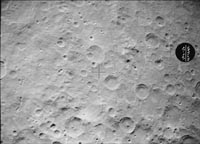 Frame 47 * Frame 47 * |
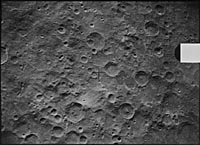 Frame 48 Frame 48 |
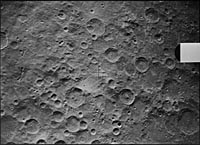 Frame 49 Frame 49 |
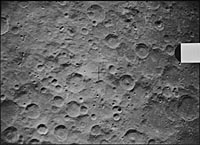 Frame 50 Frame 50 |
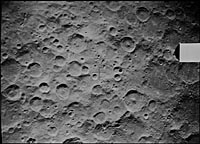 Frame 53 Frame 53 |
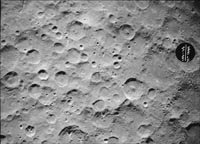 Frame 54 * Frame 54 * |
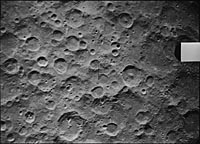 Frame 55 Frame 55 |
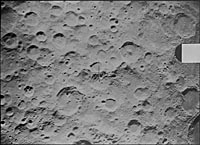 Frame 57 Frame 57 |
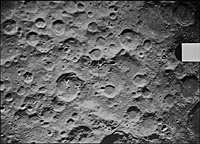 Frame 58 Frame 58 |
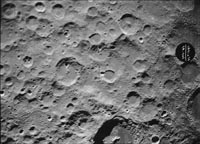 Frame 59 * Frame 59 * |
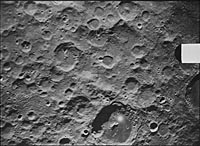 Frame 60 Frame 60 |
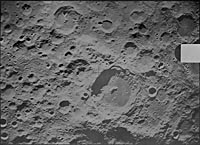 Frame 63 Frame 63 |
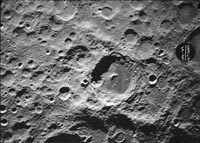 Frame 64 * Frame 64 * |
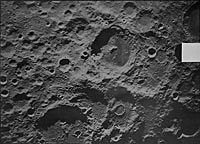 Frame 66 Frame 66 |
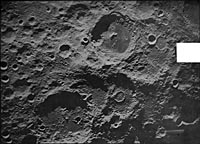 Frame 67 Frame 67 |
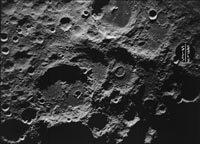 Frame 69 * Frame 69 * |
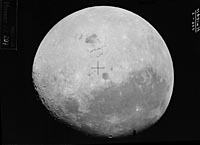 Frame X2* Frame X2* |
 Frame X38* Frame X38* |
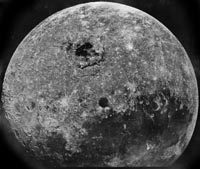 Frame X? Frame X? |
A few sections at full resolution show the true quality of the
Zond camera system:
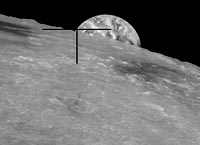 Detail from Frame 9 Detail from Frame 9 |
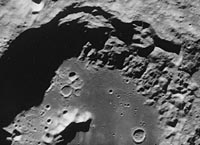 Detail from Frame 59 Detail from Frame 59 |
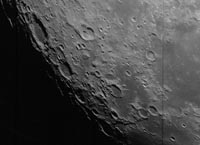 Detail from Frame X38 Detail from Frame X38 |
 Frame 1 *
Frame 1 *  Frame 5
Frame 5  Frame 6
Frame 6  Frame 1 *
Frame 1 *  Frame 5
Frame 5  Frame 6
Frame 6  Frame 7
Frame 7  Frame 8
Frame 8  Frame 9 *
Frame 9 *  Frame 10
Frame 10  Frame 14
Frame 14  Frame 15 *
Frame 15 *  Frame 19
Frame 19  Frame 20 *
Frame 20 *  Frame 25
Frame 25  Frame 26 *
Frame 26 *  Frame 31 *
Frame 31 *  Frame 35
Frame 35  Frame 36 *
Frame 36 *  Frame 39
Frame 39  Frame 40
Frame 40  Frame 41 *
Frame 41 *  Frame 45
Frame 45  Frame 47 *
Frame 47 *  Frame 48
Frame 48  Frame 49
Frame 49  Frame 50
Frame 50  Frame 53
Frame 53  Frame 54 *
Frame 54 *  Frame 55
Frame 55  Frame 57
Frame 57  Frame 58
Frame 58  Frame 59 *
Frame 59 *  Frame 60
Frame 60  Frame 63
Frame 63  Frame 64 *
Frame 64 *  Frame 66
Frame 66  Frame 67
Frame 67  Frame 69 *
Frame 69 *  Frame X2*
Frame X2*  Frame X38*
Frame X38*  Frame X?
Frame X?  Detail from Frame 9
Detail from Frame 9  Detail from Frame 59
Detail from Frame 59  Detail from Frame X38
Detail from Frame X38